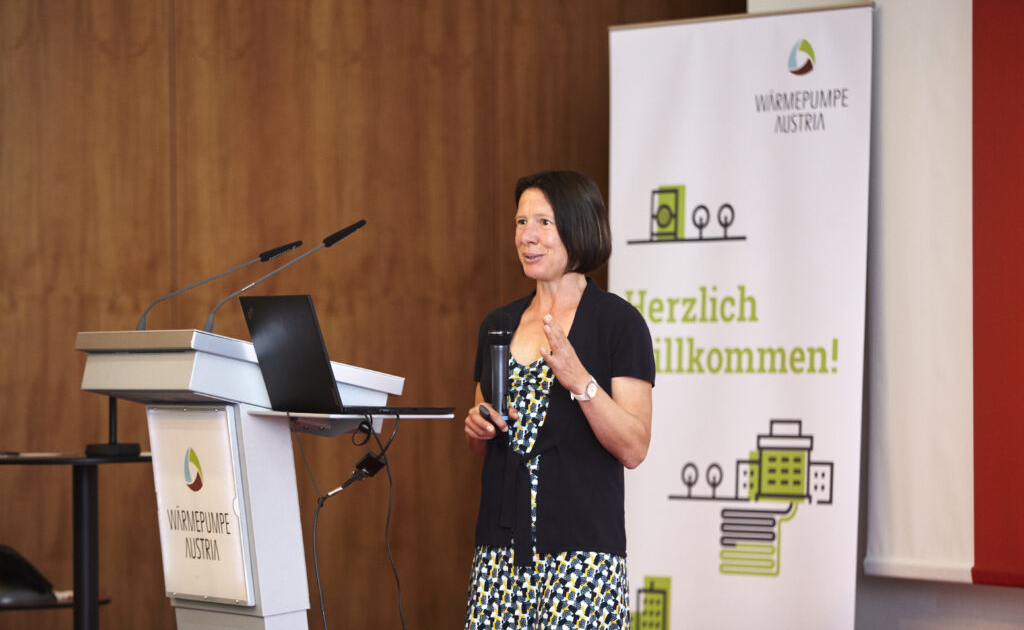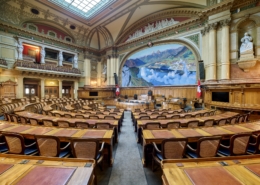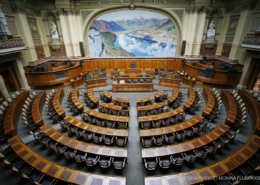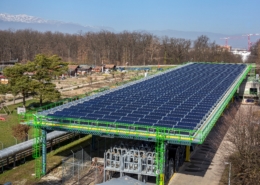A biomass district heating network combining wind power and heat pumps
Heat pump solutions for neighbourhoods, public buildings, industry, commerce and local and district heating, that was the focus at the 5th International Large-Scale Heat Pump Conference in Linz, Austria on 15-16 September 2021. New trends and technologies were presented. For example, a district heating project that combines wind power, heat pumps and biomass firing.
In her presentation, Rita Kobler, specialist for renewable energies at the Swiss Federal Office of Energy, outlined the legal framework and the state of development in Switzerland. Energeiaplus wanted to know from her what particularly impressed her at the congress.
Rita Kobler: I was particularly impressed by a presentation by Matthias Lehner, from Energie Burgenland Green Energy GmbH. They have implemented a new concept that improves sector coupling and increases efficiency. This is how I imagine the future.
How so?
Energie Burgenland operates the Neusiedl am See biomass district heating network and 17 wind turbines. In the winter half-year, the wood-fired plant with a gas peak load boiler supplied a heat output of between 2 and 3.5 MW to the district heating network, depending on the outside temperature. In the summer half-year it was only 0.3 to 1.5 MW. The 17 wind turbines produce electricity. The electrical output varies between 0 and 30 MW. Because the feed-in tariff has been discontinued, a new concept was sought. With the new concept, wind energy is used for the air/water heat pumps in summer, and in winter a heat pump with wind power extracts heat from the exhaust gas of the wood furnace and increases the efficiency of the biomass furnace.
In winter, the heat pump uses wind power to extract heat from the exhaust gas of the wood furnace. Can you explain this a bit more?
You have created a direct power line from the wind turbine to the district heating energy centre and installed an electricity storage system in between. In the district heating centre, two exhaust gas heat pumps have been installed in the chimney of the wood-fired plant, which increase the energy yield from the wood fuel in the winter months when the wood-fired plant is in operation. Previously, flue gas heated to 180°C was discharged to the outside air. This flue gas also contained water, because wood has a certain water content. The water from the wood goes into the smoke during combustion and with it through the chimney to the outside air. If now a heat pump in the chimney extracts heat from the wood combustion, the hot temperature in the chimney can be used and the water contained in the smoke condenses. With each condensation heat is released. If the same amount of wood is burned, more energy is extracted from it today. The new concept also makes it possible for Energie Burgenland Green Energy GmbH to take the peak load gas boiler out of operation.
And how does the plant work in summer?
In summer, the heat energy is now provided by two air/water heat pumps. Air-to-water heat pumps are very efficient, especially in summer. They enable the direct use of wind energy. This is also because two heat storage tanks of 150m3 each are available. The electricity and heat storage units make it possible to combine wind power production and heat pump operation.
This means that wood and heat pumps complement each other?
Exactly. The various available energy resources are cleverly and efficiently combined. Gas is no longer needed. The wood saved can now be used elsewhere to substitute fossil fuels.
What else did you notice at this congress?
Large heat pumps are suitable for supplying heat via thermal networks as well as for industrial processes. It is important to critically question whether the temperatures set so far are necessary. For every degree less that the heat pump has to provide, it becomes around 2.5 percent more efficient.
Can you give us a concrete example?
Yes, the Austrian Institute of Technology has shown in a research project that a heat pump that has 70 degrees of waste heat from ceramic firing available can produce 160 degrees of heat for drying the ceramics. Impressive!
However, in practice the heat pump runs at 140 degrees. It has been shown that 140 degrees is also sufficient to carry out the drying process within the desired time frame. This means that enormous energy savings can also be made here.
The large heat pump congress is an event organised by the three heat pump associations of Austria, Germany and Switzerland. Experts from research, the installation trade, heat pump manufacturers and operators as well as representatives of the authorities will be taking part in the conference.
Brigitte Mader, Communication, Swiss Federal Office of Energy
 Wärmepumpe Austria
Wärmepumpe Austria
 Parlamentsdienste 3003 Bern / Rob LewisCO2-Gesetz im Parlament auf der Zielgeraden?
Parlamentsdienste 3003 Bern / Rob LewisCO2-Gesetz im Parlament auf der Zielgeraden?  keystoneFin de Session: Die Energiepolitischen Themen der Wintersession 2022
keystoneFin de Session: Die Energiepolitischen Themen der Wintersession 2022  Magali Girardin / SIGChaleur solaire XXL
Magali Girardin / SIGChaleur solaire XXL  Milin John Abschied von den Halogen-Leuchtmitteln
Milin John Abschied von den Halogen-Leuchtmitteln 
 Shutterstock
Shutterstock
Dein Kommentar
An Diskussion beteiligen?Hinterlassen Sie uns Ihren Kommentar!